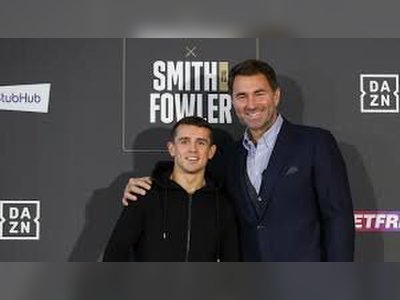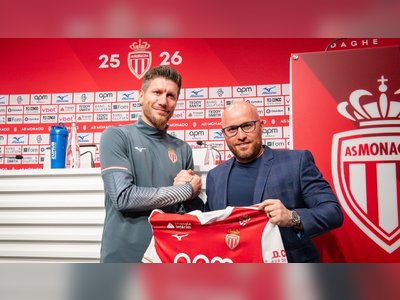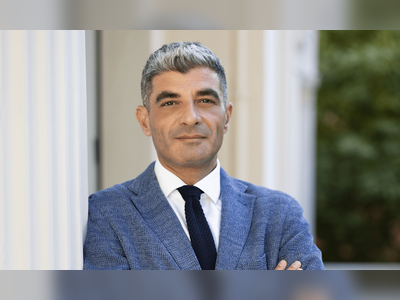The Sydney Sweeney and Jeans Storm: “The Outcome Surpassed Our Wildest Dreams”
American Eagle’s Chief Marketing Officer Craig Brommers breaks his silence on the controversial Sydney Sweeney campaign, defending the decision not to pull it despite online backlash and revealing it brought one million new customers in six weeks.
Two months after the uproar, American Eagle’s Chief Marketing Officer in the United States, Craig Brommers, has spoken publicly for the first time about the campaign starring Sydney Sweeney that sparked a cultural storm.
“Sydney Sweeney stayed with us, and we will definitely stay with her.
There were a few difficult moments, and we stood by each other,” said Brommers.
Brommers, who led the highly controversial campaign, had remained silent throughout the heated debate—one that some labeled as racially charged—after the commercials began gaining traction.
In an interview with Adweek, he spoke about the backlash, the decision not to withdraw the campaign, and its financial results.
“Just last Saturday night, it was still in the news—it was even featured in a sketch on Saturday Night Live.
I can’t believe that something in our advertising and marketing world is still attracting this level of attention ten weeks later,” said Brommers.
“Our goal wasn’t to join a cultural discussion but to define culture.
The outcome surpassed our wildest dreams”.
The campaign, launched at the end of June, featured Sweeney with the slogan: “Sydney Sweeney Has Great Jeans”.
In the ad, she says: “Genes are passed down from parents to offspring and often determine traits such as hair color, personality, and even eye color.
My jeans are blue”.
The play on words between “great genes” and “great jeans” led many on the liberal and far-left spectrum to accuse the brand of promoting white supremacy.
Some even claimed it echoed Nazi racial rhetoric.
According to Brommers, “five years ago, the playbook might have been: the Chief Marketing Officer gets fired, the campaign is pulled immediately, and someone writes a big check to a certain organization.
I knew I didn’t need to worry about that scenario”.
Adweek reported that when the campaign launched on a Friday in late June, the initial response was overwhelmingly positive.
American Eagle’s stock jumped twenty-five percent on launch day, accompanied by broad media coverage.
By the end of the weekend, however, the tone shifted.
“I clearly remember sitting down with a cup of coffee, opening LinkedIn, and reading some really nasty comments for the first time,” recalled Brommers.
“It just stopped me in my tracks.
I was like, ‘Wow, where did this come from?’” He said the negative sentiment peaked the following Monday—the only day during the ten-week campaign when criticism outweighed support.
“Some people say this campaign was flooded with negativity.
That’s absolutely not true,” he emphasized.
As the narrative began to shift, Brommers quickly assembled a small team of internal and external partners to craft a strategy centered on restraint.
“On one hand, we had to act very quickly, but on the other hand, we did nothing,” he said.
Instead of reacting to the online noise, the brand sought feedback from “real Americans,” which, according to him, gave the company “a lot of confidence” to stay the course.
“There’s a crisis communication manual that tells you what to do in a situation like this.
We basically did the opposite.
We did nothing and simply analyzed the atmosphere,” he added.
While other marketing executives in his position might have feared losing their jobs amid such turmoil, Brommers said he had “one thousand percent support” from the CEO and board.
“Five years ago, the playbook could have been: the CMO gets fired, the campaign comes down immediately, and someone writes a big check to an organization.
I knew I didn’t have to worry about that scenario,” he explained.
Because American Eagle is publicly traded, the company entered a “quiet period” lasting more than two months after the campaign launch, meaning it could not share results or respond to criticism until weeks later.
Ultimately, the company revealed that the campaign brought in one million new customers within six weeks.
When asked what he would have done differently, Brommers was candid: “I would have bought more jeans inventory.
Some of those items sold out so fast.
Social media is very noisy—that’s not reality.
Understand what your customers are saying, and strengthen the relationship between the CEO and the CMO before something like this happens.
In the end, people will remember this for Sweeney and great jeans—and that was the original intent,” he concluded.
“Sydney Sweeney stayed with us, and we will definitely stay with her.
There were a few difficult moments, and we stood by each other,” said Brommers.
Brommers, who led the highly controversial campaign, had remained silent throughout the heated debate—one that some labeled as racially charged—after the commercials began gaining traction.
In an interview with Adweek, he spoke about the backlash, the decision not to withdraw the campaign, and its financial results.
“Just last Saturday night, it was still in the news—it was even featured in a sketch on Saturday Night Live.
I can’t believe that something in our advertising and marketing world is still attracting this level of attention ten weeks later,” said Brommers.
“Our goal wasn’t to join a cultural discussion but to define culture.
The outcome surpassed our wildest dreams”.
The campaign, launched at the end of June, featured Sweeney with the slogan: “Sydney Sweeney Has Great Jeans”.
In the ad, she says: “Genes are passed down from parents to offspring and often determine traits such as hair color, personality, and even eye color.
My jeans are blue”.
The play on words between “great genes” and “great jeans” led many on the liberal and far-left spectrum to accuse the brand of promoting white supremacy.
Some even claimed it echoed Nazi racial rhetoric.
According to Brommers, “five years ago, the playbook might have been: the Chief Marketing Officer gets fired, the campaign is pulled immediately, and someone writes a big check to a certain organization.
I knew I didn’t need to worry about that scenario”.
Adweek reported that when the campaign launched on a Friday in late June, the initial response was overwhelmingly positive.
American Eagle’s stock jumped twenty-five percent on launch day, accompanied by broad media coverage.
By the end of the weekend, however, the tone shifted.
“I clearly remember sitting down with a cup of coffee, opening LinkedIn, and reading some really nasty comments for the first time,” recalled Brommers.
“It just stopped me in my tracks.
I was like, ‘Wow, where did this come from?’” He said the negative sentiment peaked the following Monday—the only day during the ten-week campaign when criticism outweighed support.
“Some people say this campaign was flooded with negativity.
That’s absolutely not true,” he emphasized.
As the narrative began to shift, Brommers quickly assembled a small team of internal and external partners to craft a strategy centered on restraint.
“On one hand, we had to act very quickly, but on the other hand, we did nothing,” he said.
Instead of reacting to the online noise, the brand sought feedback from “real Americans,” which, according to him, gave the company “a lot of confidence” to stay the course.
“There’s a crisis communication manual that tells you what to do in a situation like this.
We basically did the opposite.
We did nothing and simply analyzed the atmosphere,” he added.
While other marketing executives in his position might have feared losing their jobs amid such turmoil, Brommers said he had “one thousand percent support” from the CEO and board.
“Five years ago, the playbook could have been: the CMO gets fired, the campaign comes down immediately, and someone writes a big check to an organization.
I knew I didn’t have to worry about that scenario,” he explained.
Because American Eagle is publicly traded, the company entered a “quiet period” lasting more than two months after the campaign launch, meaning it could not share results or respond to criticism until weeks later.
Ultimately, the company revealed that the campaign brought in one million new customers within six weeks.
When asked what he would have done differently, Brommers was candid: “I would have bought more jeans inventory.
Some of those items sold out so fast.
Social media is very noisy—that’s not reality.
Understand what your customers are saying, and strengthen the relationship between the CEO and the CMO before something like this happens.
In the end, people will remember this for Sweeney and great jeans—and that was the original intent,” he concluded.










